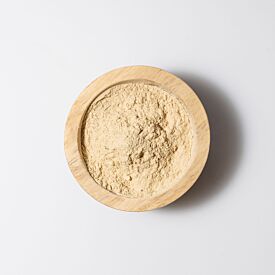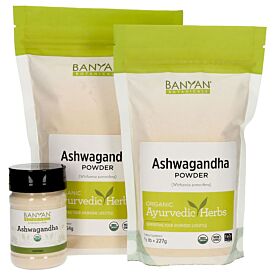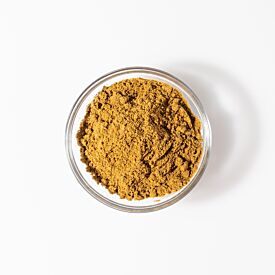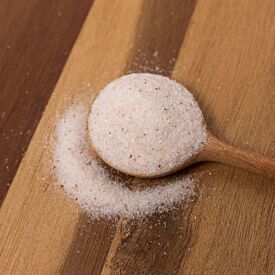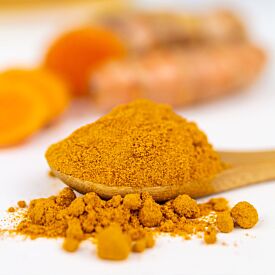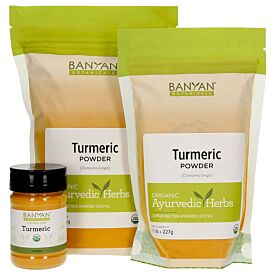Ayurvedic Oatmeal Recipes for Every Dosha
First published in 2018, this article has been an enduring favorite of ours at Banyan. We're happy to be sharing it with you again, and we hope you enjoy reading it and making these recipes as much as we do!
Cooking fresh food is one of the most important ways we can nourish ourselves. And what is easier to make than oatmeal?
What do you think of when you visualize a bowl of oats for breakfast? Steaming, warm, and sweet, nourishing to your heart and soul? Or sticky, gooey yumminess? It can be both, depending on your Ayurvedic body-type!
According to Ayurveda, every substance (dravya) is either healing, neutral, or poisonous, depending on its guna, or qualities.
A substance is medicinal when its qualities bring your system closer to balance, and it becomes toxic if it affects your digestion (agni) negatively or imbalances your doshas— vata, pitta, or kapha.
Oatmeal may seem like a benign substance, but it certainly has obvious qualities to it.
Oats and Ayurveda
Oats can be prepared and enjoyed as a meal, tea, or herbal infusion (the dried tops can be harvested for tea before they reach maturity).
From an Ayurvedic standpoint, oats in any form are considered to have soft, heavy, sticky, warm, and slightly oily (mucilaginous, we might say) qualities. And oats, in their grain form, naturally taste sweet.
These qualities and the dominant sweet taste are particularly balancing for vata dosha, and the sweet taste, along with the heavy and soft qualities, are balancing for pitta.
Oats are so similar to kapha dosha (think heavy, oily, soft, sticky, and sweet) that by the rules of Ayurveda, they are aggravating to kapha and kapha conditions unless prepared correctly.
Sweeteners and the Doshas
In Ayurveda, there is a time and place for sweeteners, and certain sweeteners are more appropriate for some doshas than others.
The following list will give you an idea of what may be best for you. If you aren't sure what your dosha is, the dosha quiz is a quick and easy way to find out.
Sugar. White sugar is made from sugar cane. It is heavily refined and imbalancing to all doshas.
Jaggery. Made from sugar cane and date sugar or palm sap (or a combination), this brown sugar is popular in India. It’s often kept in block form, so it has 20–30 percent more moisture than other sugars, and it is much less refined. Jaggery is generally good for vata but aggravating for pitta and kapha.
Maple Syrup. Also known as maple sugar, this sweetener is native to the Northeastern United States and Canada. It is sap from maple trees that has been boiled down to a sticky (or all the way to dry) substance. Considered cool, heavy, and sweet, it contains vital nutrients like zinc and manganese. It is the best sweetener for pitta and suitable for vata when used in moderation.
Honey. Considered to have a heating and scraping action, honey is best for kapha dosha and should only be eaten raw and in small amounts. As noted in many Ayurvedic texts, honey becomes "poisonous" and difficult to digest when cooked, creating ama (toxins) in the system.
Agave. This sweetener comes from the nectar of the agave plant. While some tout it as a low-glycemic index sweetener with numerous health benefits, others believe it is a highly processed sweetener like cane sugar. In Ayurvedic terms, it is said to provoke kapha and to be okay for vata and pitta.
Dried fruit. Dried fruits, when cooked into oatmeal, are a great way to add sweetness.
- Dates, raisins, currants, apples, and ripe bananas are suitable for vata-types.
- For pitta-types, favor sweet apples, dates, raisins, and figs.
- Kapha-types do best with apples, apricots, cranberries, and raisins.
Ayurvedic food combining rules state that uncooked or raw fruit should not be added to other foods. However, when fruits and certain foods are cooked together, the qualities of the foods change and may become more compatible.
This is the case when dosha-specific dried fruits are cooked with the oats. Another consideration is the strength of agni, and if digestion is weak, it is best to stick with plain oats.

What Else Can I Add to My Oats?
Oatmeal is a common breakfast food, and many people enjoy "spicing it up" with different things, but as you learn more about Ayurveda, you'll likely begin to question some of your food choices.
Let’s take a closer look at some of the most popular toppings for oatmeal and who might best enjoy them:
Ghee
Ghee (clarified butter) can be an excellent tridoshic choice for topping your oatmeal. Feel free to use ghee generally in any of the below recipes.
Yogurt
Yogurt can be okay for all three doshas, but as with everything else, it needs to be used in specific ways. In general, it's best for all doshas to favor fresh yogurt, and avoid commercial or frozen yogurt. You can also dilute the yogurt.
Nuts & Seeds
You can add nuts to your oats, and again what’s appropriate for you will depend on your dosha.
- Vata benefits from simple combinations, and nuts, while providing fats and protein, can challenge vata digestion, so it may be best to avoid adding nuts altogether. If you do add them, small quantities of coconut, sunflower seeds, and almonds are appropriate.
- Pitta often has a strong digestive fire and may burn through a breakfast of oatmeal within an hour. This is where nuts can help sustain them. Soaked and peeled almonds, coconut, pumpkin seeds, and sunflower seeds are appropriate.
- Kapha can do well with the addition of nuts, as the qualities of some nuts can bring balance to this dosha. Soaked and peeled almonds, pumpkin seeds, and sunflower seeds are appropriate.

Dosha-Balancing Oatmeal Recipes
Vata-Balancing Bowl
Vata needs a soupier consistency, and organic rolled or quick oats with gentle spices like ginger, cardamom, and cinnamon are best.
Ingredients:
- Organic rolled oats or quick cooking oats
- Small amount of fresh ginger
- Pinch of cinnamon powder
- Pinch of cumin powder
- Pinch of mineral salt
- Pinch of nutmeg
- Pinch of cardamom powder
- Maple sugar or syrup to taste
- 1 tablespoon of nut butter
- 1 teaspoon ashwagandha powder
- Extra water
Directions:
Refer to the package directions on your oats for suggested quantities and cooking times. For most oatmeal recipes, the ratio for oats to water is 1:2, but adding a little extra water will give your oats a soupier, more vata-friendly consistency.
Mix the oats, cinnamon, cumin, nutmeg, cardamom, and ashwagandha and gently stir before adding to water.
Add toppings, ginger, nut butter, and maple sugar or syrup (if desired) and enjoy.
Cooking Notes:
- If using fruit, favor dates, raisins, currants, apples, and ripe bananas, and add them to the oatmeal while cooking, rather than as a topping.
- Alternatively, you can use fresh yogurt as a topping. (Remember, yogurt and fruit are not compatible for optimal digestion.)
- If you’d like to add nuts or seeds, use small quantities of coconut, sunflower seeds, and almonds as toppings.
Pitta-Balancing Bowl
Because pitta needs more substance to their breakfast, steel cut oats are best. They are less processed and will be more filling.
Ingredients:
- Steel cut oats or quick cooking steel cut oats
- 1 date
- 8–10 soaked and peeled almonds
- Pinch of cinnamon powder
- Pinch of cardamom powder
- 1 tablespoon coconut milk
- Maple syrup to taste
Directions:
Refer to the package directions on your oats for suggested quantities and cooking times. For most oatmeal recipes, the ratio for oats to water is 1:2.
Mix the oats, cinnamon, and cardamom, then gently stir before adding to water.
Add toppings, almonds, coconut milk, and maple syrup (if desired) and enjoy.
Cooking Notes:
- If using fruit, favor apples, apricots, cranberries, and raisins either cooked into the oats or added as toppings.
- Alternatively, you can use fresh, diluted yogurt as a topping. (Remember, yogurt and fruit are not compatible for optimal digestion.)
- If you’d like to add nuts or seeds, favor coconut, pumpkin seeds, and sunflower seeds as toppings.
Kapha-Balancing Bowl
The gritty, textured quality of steel cut oats will benefit kapha. Dry roasting is not necessary.
Ingredients:
- Steel cut oats or quick cooking steel cut oats
- Small amount of fresh ginger
- Pinch of turmeric powder
- 1 teaspoon dried coconut
- 1 tablespoon dried currants
- 1 tablespoon pumpkin seeds or chia seeds
Directions:
Refer to the package directions on your oats for suggested quantities and cooking times. For most oatmeal recipes, the ratio for oats to water is 1:2.
Mix the turmeric, coconut, currants, and seeds to oats, then gently stir before adding the water.
Add ginger and other desired toppings and enjoy!
Cooking Notes:
- If using fruit, favor sweet apples, dates, raisins, and figs as toppings.
- Alternatively, you can use fresh, diluted yogurt as a topping. (Remember, yogurt and fruit are not compatible for optimal digestion.)
- If you’d like to add nuts or seeds, opt for soaked and peeled almonds, pumpkin seeds, and sunflower seeds.
- The best sweetener for kapha is honey. If desired, you can add a small amount to your bowl for a little extra sweetness.





